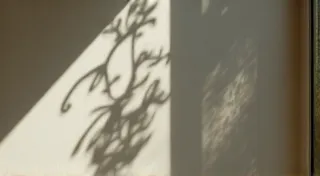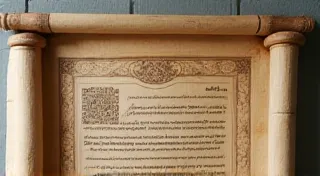The Art of Japanese Kintsugi Repair: Finding Beauty in Brokenness & Resilience in Writing
Welcome. This is a space dedicated to the profound intersection of ancient Japanese art, the craft of writing, and the courage to embrace imperfection. We explore the philosophy of Kintsugi – the traditional Japanese pottery repair technique of mending broken ceramics with gold – as a powerful metaphor for creativity, resilience, and the beauty found in embracing flaws. This process often involves intricate gold repair techniques.
Finding Gold in the Cracks: An Introduction to Kintsugi & Writing
Imagine a cherished ceramic bowl, shattered and seemingly beyond repair. Most would discard it, deeming it worthless. But in Japan, there’s another way. Kintsugi, literally meaning "golden joinery," transforms that brokenness into something extraordinary. The cracks aren’t hidden; they’re highlighted with lacquer dusted or mixed with powdered gold, silver, or platinum. This isn’t a repair—it’s an elevation. Each visible line tells a story of breakage and restoration, celebrating the history of the piece, adding to its beauty and value. The skill involved in gold repair is an art form in itself, requiring precision, patience, and a deep understanding of materials, history, and aesthetics. This isn't merely a technical fix; it's a philosophical statement about embracing imperfection and finding beauty in vulnerability. The process itself demands a level of mindfulness and respect for the object's past, acknowledging its journey and integrating that history into its present form.
This philosophy resonates deeply within the writing process. As writers, we all face challenges: rejected manuscripts, crippling self-doubt, debilitating writer’s block, and the daunting prospect of first drafts that feel irreparably flawed. The temptation is to succumb to perfectionism, to abandon projects that don’t immediately meet our expectations. It's easy to fall into the trap of believing that writing must be flawless, a seamless expression of brilliance from inception to finished product. But what if, instead of discarding those "broken" pieces, we embraced them? What if we saw those flaws, those moments of struggle, as opportunities for growth and transformation? Consider the initial spark of an idea – often messy, incomplete, and riddled with uncertainty. That’s the "broken" piece of the ceramic bowl, the raw material from which something beautiful can emerge.
This website is a journey through that exploration. We’re not just talking about Japanese art; we’re using it as a lens through which to examine the creative process, the nature of storytelling, and the vital importance of self-compassion. We’re diving into the profound concept of Wabi-Sabi—the Japanese aesthetic philosophy that finds beauty in imperfection, impermanence, and simplicity—and its profound relevance to the writing journey. Wabi-Sabi challenges the Western ideals of flawless beauty and enduring perfection, instead celebrating the natural cycle of growth, decay, and renewal. It reminds us that everything is in a constant state of flux, and that true beauty lies in embracing that impermanence. Just as the visible joinery in Kintsugi tells a story of resilience, so too can the gaps and silences in our writing reveal deeper truths, unspoken emotions, and nuanced perspectives.
The creative process is often fraught with challenges, from writer's block to self-doubt, from the fear of judgment to the pressure of expectations. But these moments of struggle can also be catalysts for growth, opportunities for learning, and sources of unexpected inspiration. Understanding the principles of Kintsugi allows us to reframe our relationship with those challenges, to see them not as failures, but as integral parts of the creative journey. Consider the resonance of absence—the power of what isn’t said, the stories implied rather than explicitly stated. Discover The Resonance of Absence and the art of crafting narrative gaps, learning to leverage silence and suggestion to create depth and intrigue in your storytelling.
Exploring Key Themes: Impermanence, Resilience & Narrative
The themes explored here extend far beyond the technical aspects of pottery repair. We delve into the philosophical underpinnings of Wabi-Sabi and its relevance to the writing journey. The Japanese concept of Mono no Aware, which translates roughly to “the pathos of things,” captures the bittersweet feeling of appreciating the fleeting nature of beauty and life. This understanding can profoundly impact a writer's approach to character development, plot construction, and thematic exploration. Recognizing the impermanence of everything—relationships, memories, even the stories we tell—can infuse our writing with a sense of poignancy and urgency.
We also examine the importance of honoring the past. Just as Kintsugi elevates the history of the broken vessel, writers can draw inspiration from their lineage, from the voices that came before them, from the collective wisdom of generations. The Weight of Lineage—the stories and experiences passed down through families, communities, and cultures—can inform and enrich contemporary writing, providing a framework for understanding the present and shaping the future. Exploring historical narratives can be enhanced by understanding Echoes in the Gold, which encourages writers to find resonance and relevance in the past while avoiding the pitfalls of romanticization or revisionism.
Creative processes often involve embracing flawed narratives and characters, learning to find redemption and growth in imperfection. This can involve using fractured perspectives, as discovered in Fractured Perspectives, allowing readers to piece together a complete picture from fragmented viewpoints. A damaged first draft is not the end; instead, consider Beyond Repair, and learn how to approach them with an open mind and a willingness to experiment. The initial draft is merely a foundation, a starting point for a long and iterative process of refinement and transformation.
Specific Writing Techniques Inspired by Kintsugi
Inspired by the principles of Kintsugi, we offer specific techniques writers can employ to enhance their craft and embrace the beauty of imperfection:
- Golden Threading: Identify the core theme or message of your story, and weave it throughout the narrative like the gold in Kintsugi. This technique helps to create a sense of cohesion and purpose, even when the story feels fragmented or chaotic.
- Visible Scarring: Don’t shy away from depicting the flaws and vulnerabilities of your characters. These “scars” can be sources of strength, resilience, and growth.
- Fragmented Perspective: Experiment with multiple narrators, non-linear timelines, or unreliable narrators to create a sense of fragmentation and complexity.
- Embrace Silence: Use pauses, ellipses, and unspoken words to create a sense of mystery, intrigue, and emotional depth.
- Reimagine Revision: View revision not as a process of correction, but as an opportunity to enhance and elevate the existing material, building upon its strengths and integrating its flaws.
Here are further examples of techniques to employ:
- The Gilded Thread, exploring the balance between rough edges and intentional structure.
- The Gold Standard of Honesty, encouraging radical transparency and vulnerability.
- Golden Threads, emphasizing the power of shared vulnerability in connecting with readers.
- Reimagining the Ruin, finding innovation in unexpected forms.
- The Space Between Words, mastering the art of narrative rhythm.
- The Visible History, layering meaning through fragmented narratives.
Cultivating Self-Compassion and Resilience
Navigating the writing process requires not only skill but also a deep sense of self-compassion. It’s easy to fall prey to self-criticism and doubt, particularly when facing rejection or encountering creative roadblocks. Kintsugi reminds us that our imperfections are not weaknesses; they are integral parts of our journey, contributing to our unique perspective and adding depth to our voice. It’s an exercise in mindful self-acceptance, acknowledging the struggles and celebrating the triumphs along the way. The Metaphor of Mending explores this concept in detail, offering practical strategies for cultivating self-compassion and resilience. Embrace Rebirth in the Crack and how to find renewal from writer's block, recognizing that these moments of creative stagnation can lead to new insights and breakthroughs.
Remember, every writer faces moments of self-doubt. It's part of the process. The key is to learn from those experiences, to approach them with curiosity and kindness, and to recognize that setbacks are often stepping stones to success.
Ultimately, Kintsugi provides a powerful metaphor for the creative journey: embracing imperfections, finding beauty in brokenness, and transforming challenges into opportunities for growth. Just as the skilled artisan painstakingly repairs a broken vessel with gold, we too can transform our creative struggles into opportunities for profound self-discovery and artistic expression. Fractured Vessels, Flourishing Narratives offers a deeper dive into this concept, providing further insights and practical techniques for embracing imperfection and finding beauty in brokenness.
The next time you encounter a creative challenge, remember the spirit of Kintsugi: embrace the imperfections, celebrate the history, and transform the brokenness into something extraordinary.






















